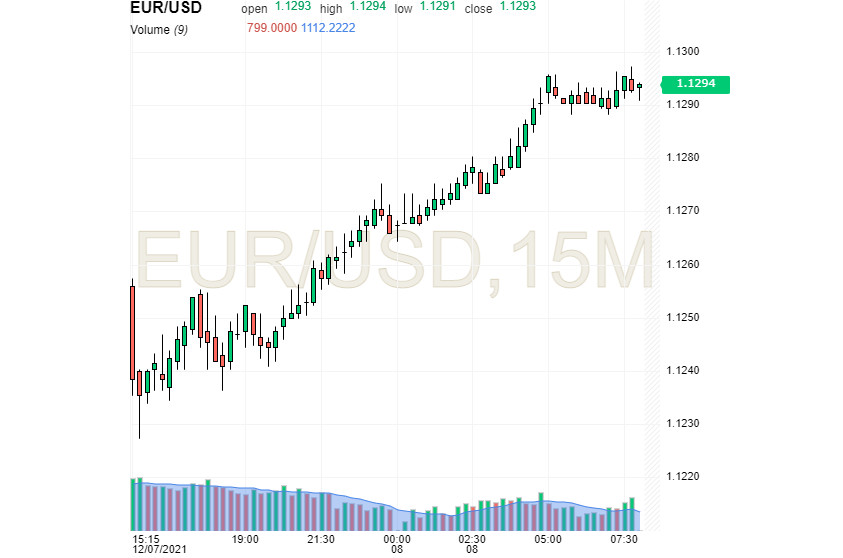
The European currency was under strong pressure at the beginning of this week, fluctuating on the verge of a serious collapse. However, it found balance and tried to rise, pulling the EUR/USD pair to a new level.
In view of a relatively volatile US dollar, the euro steadily fell, occasionally rising to an acceptable level. Experts did not give it a chance, because the ECB's "dovish" strategy was acting against it. It can be recalled that the European regulator adheres to the position of non-interference in the current monetary policy, refusing to curtail incentives and raise rates. It seems that the ECB is following the path of the Fed, which until recently insisted on the "temporary" nature of inflation. Now, its European colleague is doing this.
The US currency retains its basic strength against the European one. It is supported by market expectations about the tightening of the Fed's monetary policy and the prospect of a rate hike in May next year. According to preliminary calculations, three rate increases are expected in 2022, starting from the last month of spring. This decision is facilitated by the revival of inflation expectations in the United States, which recovered after falling to the highs of November 2021.
Analysts explain the current strengthening of the indicator by the "hawkish" attitude of the Fed, whose representatives ignored weak data on the US labor market (nonfarm payrolls). The focus is on the upcoming report on US inflation, which may cover the negative impact of Nonfarm data. According to preliminary estimates, US consumer prices in November increased to 6.7% year-on-year.
At the moment, there is a situation in the market that is not too favorable for the US currency. Experts have recorded an increase in risk sentiment and a departure from the "safe haven" currencies, primarily from the USD. On Wednesday morning, the EUR/USD pair was trading at the level of 1.1294. The euro managed to make an upturn and catch up a little. A day earlier, the Euro currency was trading in the range of 1.1263-1.1266.

In the coming year, the markets expect the Federal Reserve to tighten the monetary policy. However, there are a number of pitfalls in this issue. According to analysts at Morgan Stanley, the largest bank, the change in the regulator's strategy poses a serious threat to global stock markets. Experts are sure that the negative impact of the new MP will be stronger than the impact of the new strain of the coronavirus "Omicron". It should be noted that the panic in the markets about the new COVID-19 mutation has subsided a little.
Morgan Stanley currency strategists analyzed the comments of the Fed chairman Jerome Powell, who announced his readiness to accelerate the reduction of incentives, in particular the volume of purchases of government bonds. According to him, this helps to reduce inflationary pressure. The completion of the asset purchase program will lead to their reduction in price, and the tightening of the monetary policy may provoke a collapse of the markets. As a result, Morgan Stanley believes that the S&P 500 index, which includes the largest US companies by capitalization, will sharply collapse. The implementation of such a scenario carries significant risks for the US dollar, which is losing stability before 2022.





















